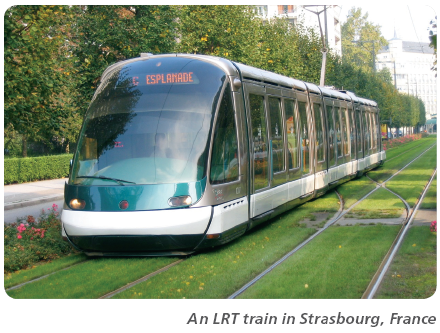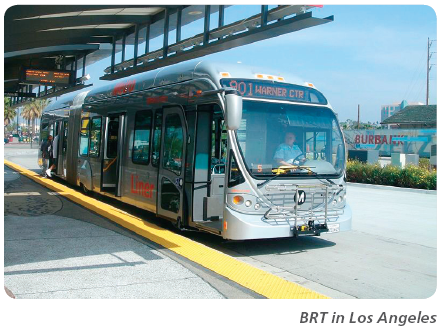The Case for Heavy Rail
Posted By Alex Lougheed On April 7, 2010 @ 12:03 pm In Editorial | Comments Disabled
By Alex MacKinnon, fifth year student in Mining Engineering, and fan of transportation planning. If you would like to pitch us a guest post, get in touch [1]–we’re a well-read forum for you to get your ideas out.
I’m sure the vast majority of people reading Insiders are pretty familiar with the transportation problems of the Broadway corridor. The viability of the status quo is frequently questioned. People ask why we need to do anything at all, why spend the money? Simply put Broadway will hit a point of diminishing returns on how many buses can be added and how many people can be moved cost effectively with buses. While the 44, 84 and 43 have been designed to partially take the load off the 99 there’s not much hope in those routes staying ahead of demand in the long term without large investments in improved service. Big infrastructure projects in Vancouver like rapid transit to UBC, have been put off for decades, but now it’s crunch time [2].
Translink and a number of stakeholder groups are currently carrying out the preliminary studies to judge future options on the Broadway corridor. There’s 3 main options on the table right now, each with a plethora of design options that need to be agreed upon in concept before things can really get moving forwards. Currently there are a lot of unsubstantiated arguments going around arguing one technology over another. I would like to try lay some of these arguments to rest and put forward a few of my own thoughts as to why we need more Skytrain.
The main contender in technologies to be used for the UBC line is skytrain [4]. Since the system would be connected into the Millennium line there’s not much room for variation with the system design. It would be similar in train and station size to that of the Millennium line. The main factors in determining the cost of a potential system are the amounts of above and underground construction used as well as the length of line built. While the use of Skytrain can be considerably more expensive than any of the other options, the result is by far the fastest, most reliable and capacious of the options presented.
Light rail transit [6] (LRT) is the second most popular contender which could be used on this project. LRT has by far the largest range of options available. It can range from streetcar running undivided from traffic all the way up to a fully grade separated system not entirely unlike our current skytrain system. The price of these options can range from tens of millions to a couple hundred million per km like Seattle’s LRT system. The speed, reliability and capacity of such a system would subsequently depend heavily on what options we choose.
The third contender for servicing the corridor is simply upgrading the existing bus service to a proper bus rapid transit [7] (BRT) level of service. Like LRT this term is ambiguous in describing what degree of construction would occur in the project. The simplest and cheapest options are simply to remove a couple lanes of traffic, make them dedicated bus lanes and call it quits. Other options include lane separation (like what was used on No.3 Road in Richmond prior to the Canada Line), use of loading platforms with ticket vending machines, additional bus signal priority or even the use of larger 3 segment buses. Costs again will depend of how many of these capital projects get lumped into the upgrade and how many additional busses are purchased to meet demand.

The main arguments put forth for LRT are aimed at the low cost nature of a possible system. With this project you’re going to only get what you pay for, and even then it’s still going to be expensive. While it is possible to slap some rails on the street and run trains down the curb lane it would be very similar to our bus system in that the trains will be limited by their ability to get through a highly congested corridor. Even with a dedicated lane LRT or streetcar will only be able to boast an increased capacity per train over a standard B-line bus and a smoother ride. With signal priority added into the scenario LRT could move much quicker but the system would still not be consequence free for cross traffic. While the likely costs of a LRT system wouldn’t be as a large that of a Skytrain line, systems such as Calgary’s west-LRT expansion indicates that any decent LRT system would likely be over $1 billion.
The biggest caveat with running such a high capacity LRT system at grade down Broadway would be the inevitable traffic chaos that the system could incite. If we assume that eventually a hundred thousand people a day could be riding this system (which may be a low estimate given the Canada Line), a train would to have to run roughly every 2 minutes in each direction to meet demand due to limits on train length. Assuming that these trains were to receive signal priority at every intersection, every major intersection on Broadway would have to cycle about once a minute to let a train through. This includes Clark, Fraser, Kingsway, Main, Cambie, Oak, Hemlock, Fir, Burrard and Arbutus. Additionally due to corridor width restrictions it’s likely that all on street parking on Broadway would have to be removed, that sidewalks would have to be narrowed, and that left turns would have to be reduced to just a handful of intersections. To say the least this would make crossing Broadway a lot harder and greatly increase the amount of congestion on Broadway itself.
Many transit users are interested in LRT mainly because it would be a more usable option for people looking to get around their immediate community. Businesses also jumped at this point because it allows easier viewing and access to stores which may be located in between Skytrain or express service stops. The problem with adding in stops every couple hundred meters is that even the fastest trains or buses used in a local configuration will likely take longer than the existing service, therefore decreasing the number of people the service is attractive to and reducing the overall benefit which we can take from this project. If the new service doesn’t attract as many riders there is obviously less justification behind increases in overall density on Broadway, ironically resulting in fewer long term customers for the businesses on the Broadway corridor. While the LRT would produce a different streetscape and feel than a Skytrain based system these points seem to largely be driven by a fear of Canada Line style construction and people fearing changes in local trolley service.
Most people who are gun-shy about breaking ground on the new Skytrain line are either suffering from Canada Line syndrome where fear of large construction projects paralyzes development, or are simply unsure of the cost effectiveness of doing a full Skytrain build-out. While these concerns are valid we should be looking at ways of getting around these pitfalls rather than stopping dead before them. If construction started off as a tunnel bore leaving from the Finning lands heading west construction could be effectively phased. Over several years the tunnel could link up subsequent stations one at a time, opening each as a successive extension of the Millennium Line. While not as glamorous or speedy as the Canada Line’s build up this type of strategy would provide additional short term benefits while allowing additional construction to occur as finances and public opinion dictate.
Unlike the construction of LRT, the construction of a UBC Skytrain line wouldn’t be starting off with a clean slate. The operations and maintenance facilities for the line will likely already be in place before the first shovels hit the ground due to expandability likely to be built into the Evergreen Line extra. The benefits of the UBC Line expansion will be felt system wide, bringing additional benefits of scale and usability to the entire system. With the addition of the Evergreen Line and UBC Line the Skytrain system is going to be a relatively large transit system.
Vancouver is a city that has never done a good job building large infrastructure projects. Vancouver is a city built on the transportation industry which also bills it self as “world class” every chance it gets. This being said it seems laughable that large sections of what should be the backbone of our city’s infrastructure are missing. This city needs a full scale transportation system that can be counted on to provide fast, efficient and cheap travel for decades to come. While LRT could have any number of excellent uses throughout Metro Vancouver, the Broadway corridor isn’t a place where its qualities will shine. We need to dive in head first and go straight for the heavy rail.
Article printed from UBC Insiders: http://ubcinsiders.ca
URL to article: http://ubcinsiders.ca/2010/04/the-case-for-heavy-rail/
URLs in this post:
[1] get in touch: http://blogs.ubc.ca/ubcinsiders/contribute/#write
[2] it’s crunch time: http://www.translink.ca/en/Get-Involved/Public-Consultations/UBC-Line-Rapid-Transit-Study.aspx
[3] Image: http://blogs.ubc.ca/ubcinsiders/files/2010/04/bway_corrodor.png
[4] skytrain: http://www.translink.ca/~/media/Documents/Get%20Involved/Public%20Consultation/UBC%20Study/Technology%20Overviews/UBC%20Line%20RTS%20Rail%20Rapid%20Transit.ashx
[5] Image: http://blogs.ubc.ca/ubcinsiders/files/2010/04/skytrain.png
[6] Light rail transit: http://www.translink.ca/~/media/Documents/Get%20Involved/Public%20Consultation/UBC%20Study/Technology%20Overviews/UBC%20Line%20RTS%20Light%20Rail%20Transit.ashx
[7] bus rapid transit: http://www.translink.ca/~/media/Documents/Get%20Involved/Public%20Consultation/UBC%20Study/Technology%20Overviews/UBC%20Line%20RTS%20Bus%20Rapid%20Transit.ashx
[8] Image: http://blogs.ubc.ca/ubcinsiders/files/2010/04/brt.png
Click here to print.


